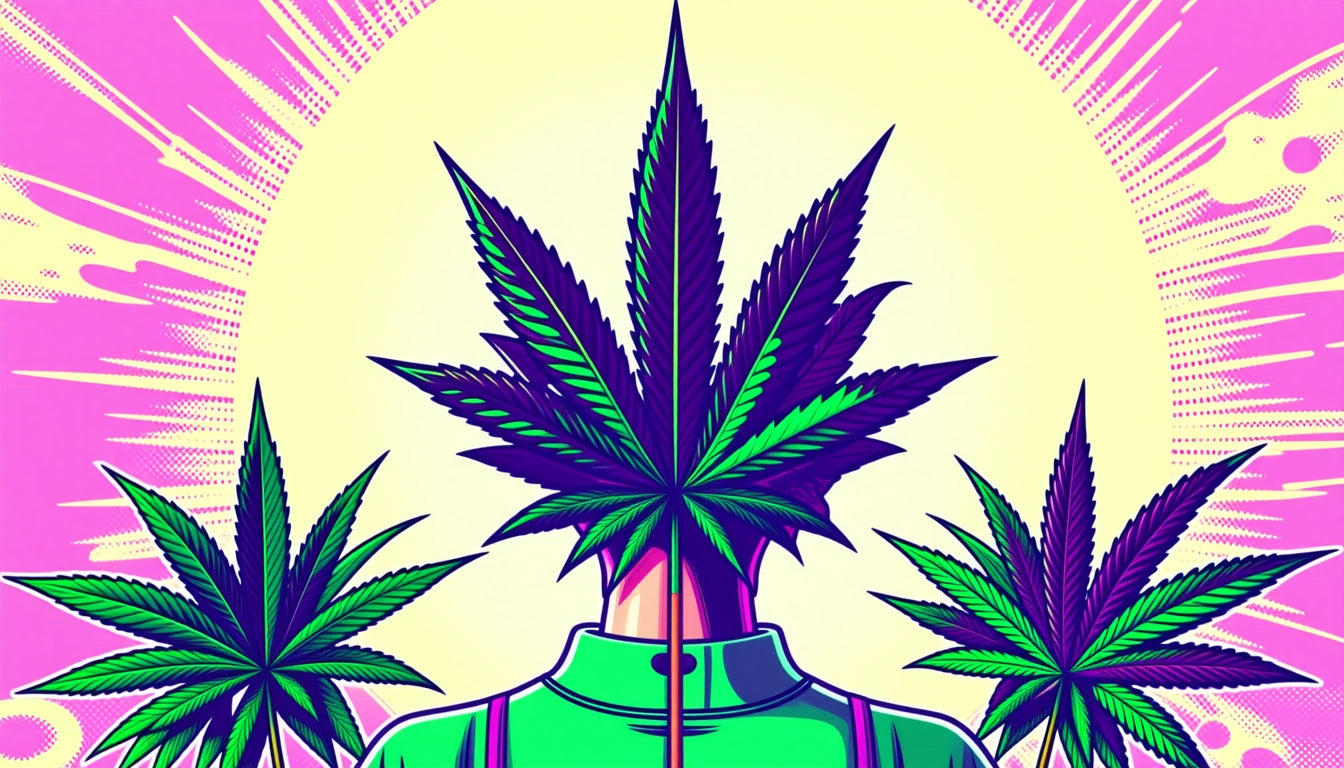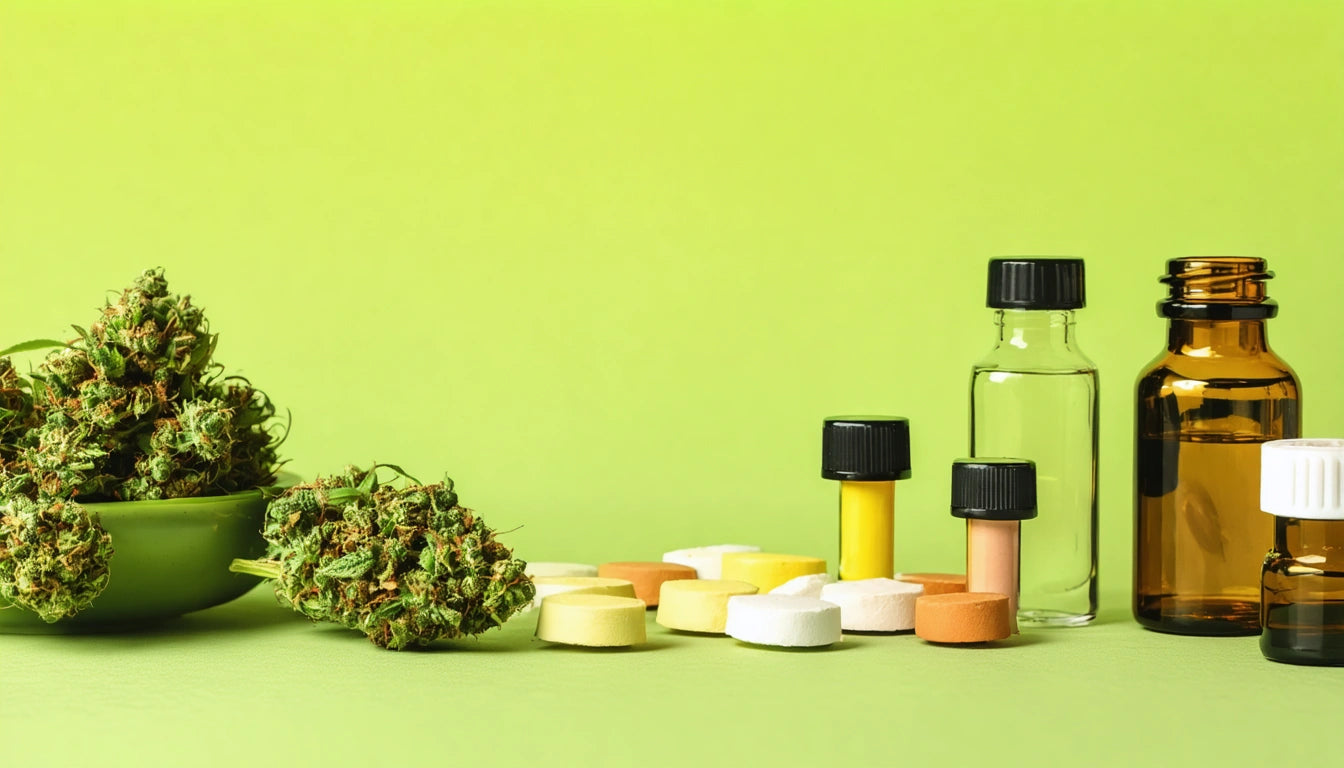Can Weed or Its Compounds Cause Hallucinations?
Cannabis affects everyone differently, with experiences ranging from mild relaxation to significant perceptual changes. One question that frequently arises is whether weed can cause hallucinations. This article explores the relationship between cannabis and perceptual alterations, examining what the research tells us about THC, CBD, and their potential to induce hallucinatory experiences.
Understanding Cannabis and Perception
Cannabis contains over 100 cannabinoids, with THC (tetrahydrocannabinol) and CBD (cannabidiol) being the most studied. These compounds interact with the endocannabinoid system, which plays a role in regulating mood, memory, and perception. Research on how weed affects perception shows that THC primarily binds to CB1 receptors in the brain, potentially altering sensory processing.
While true hallucinations (perceiving something that isn't there) are rare with cannabis use alone, perceptual distortions and illusions (misinterpreting actual stimuli) can occur, especially at higher doses or with potent products.
Can THC Cause Hallucinations?
THC is the primary psychoactive component in cannabis and can indeed cause perceptual alterations. However, the term "hallucination" may not accurately describe most cannabis experiences. According to studies on cannabis derivatives and hallucinations, THC typically produces:
- Intensified sensory experiences
- Time distortion
- Visual enhancement or distortion of existing stimuli
- Synesthesia (mixing of senses)
These effects differ from the profound hallucinations associated with classical psychedelics like psilocybin or LSD. However, in rare cases or at very high doses, THC can trigger more significant perceptual changes in susceptible individuals.
What Do Weed Hallucinations Look Like?
When people ask "what do weed hallucinations look like," they're often referring to the visual distortions that can occur with high-THC cannabis. These typically include:
- Enhanced colors and patterns
- Slight visual distortions of objects
- Trailing effects (seeing afterimages)
- Increased pattern recognition
- Visual snow or static
These effects are usually mild and recognized as distortions rather than true hallucinations. For cannabis businesses focused on consumer education, providing clear information about potential effects is crucial. Many dispensaries use secure packaging solutions for their products that include educational materials about possible perceptual effects.
CBD and Perceptual Effects
Unlike THC, CBD is non-intoxicating and typically does not cause hallucinations or significant perceptual distortions. In fact, research suggests that CBD may have antipsychotic properties and could potentially counteract some of THC's psychoactive effects.
For those wondering "can CBD cause hallucinations," the answer is generally no. CBD products with minimal THC content (less than 0.3%) are unlikely to produce perceptual alterations. However, some CBD products may contain higher levels of THC than labeled, which could potentially cause unexpected effects.
Risk Factors for Cannabis-Induced Perceptual Changes
Several factors increase the likelihood of experiencing perceptual distortions or, in rare cases, hallucinations from cannabis:
- High doses of THC
- Consumption methods that deliver THC rapidly (dabbing, vaping)
- Individual sensitivity to cannabinoids
- Personal or family history of psychotic disorders
- Concurrent use of other substances
- Sleep deprivation or stress
Understanding these risk factors is essential for both consumers and healthcare providers. Cannabis-induced psychosis, though rare, represents a more severe manifestation that can include true hallucinations and delusions.
Differentiating Hallucinations from Other Effects
Cannabis can produce various psychological effects that might be confused with hallucinations:
- Paranoia: Feeling of threat or suspicion without basis in reality. Cannabis-induced paranoia is more common than hallucinations.
- Dissociation: Feeling detached from oneself or reality. Cannabis can cause dissociative effects that might be interpreted as hallucinatory.
- Intensified thoughts: Racing or vivid thoughts that may seem profound or unusual.
These effects, while potentially concerning, differ from true hallucinations and typically resolve as the cannabis is metabolized and eliminated from the body.
Harm Reduction and Safety Considerations
For those concerned about potential perceptual distortions or other unwanted effects, several harm reduction strategies can help:
- Start with low doses and go slow, especially with edibles
- Choose products with balanced THC:CBD ratios
- Avoid cannabis if you have a personal or family history of psychosis
- Create a comfortable, safe environment for consumption
- Have a trusted friend present when trying new products
- Avoid mixing cannabis with alcohol or other substances
Understanding the potential effects of cannabis, including the rare possibility of perceptual distortions, allows consumers to make informed choices about their consumption. While cannabis can cause visual and sensory alterations, true hallucinations are uncommon with moderate use and typically only occur in specific contexts or predisposed individuals.











Leave a comment
All comments are moderated before being published.
This site is protected by hCaptcha and the hCaptcha Privacy Policy and Terms of Service apply.